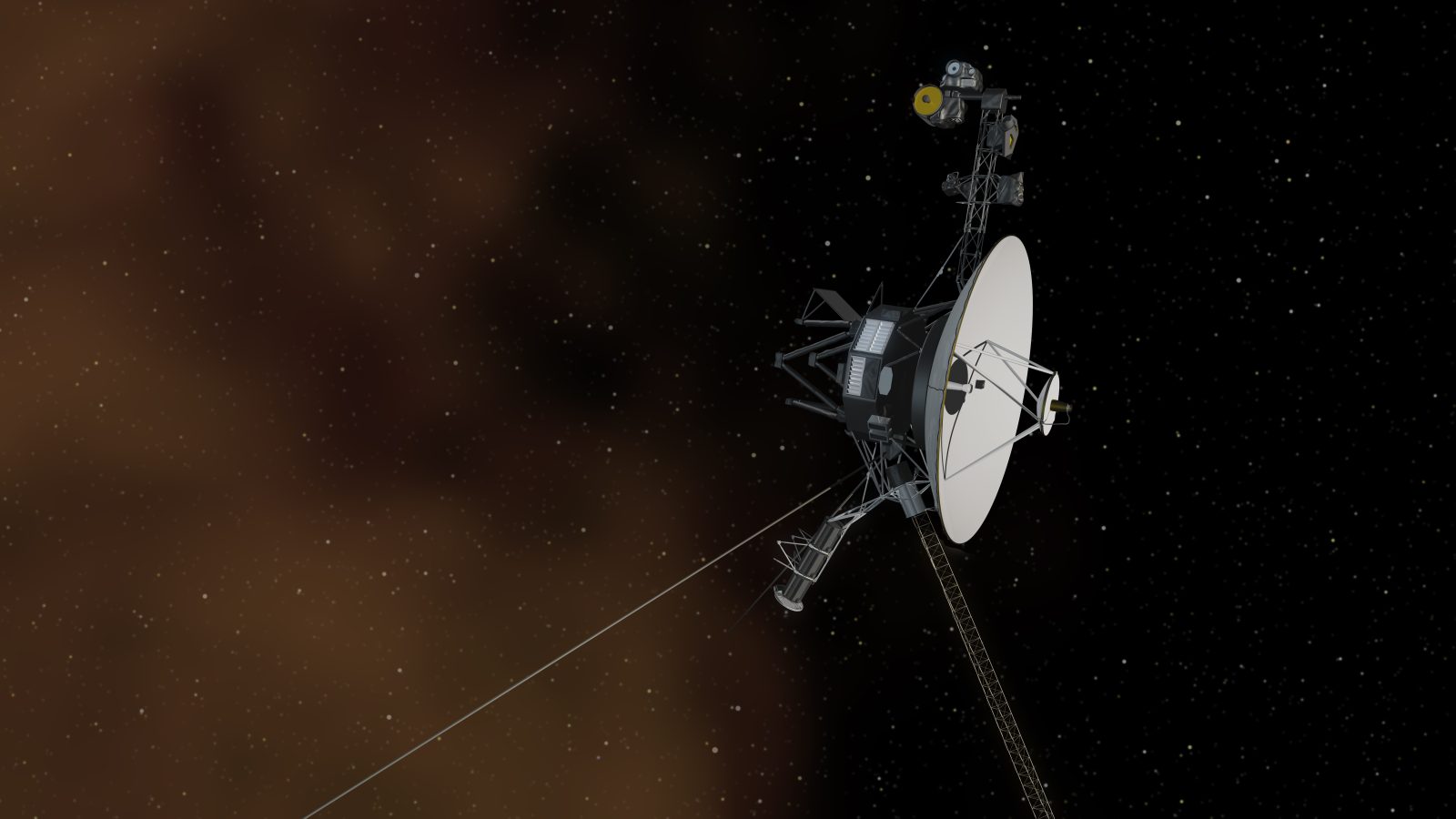
NASA announced that Voyager 1 engineers are starting to get some weird data back from one of the probe components. All seems well for Voyager 1 so far, but engineers are confused by the data they are getting.
Traveling in interstellar space, Voyager 1 is having trouble with its attitude articulation and control system (AACS). The AACS is the system that, hence the name, controls the spacecraft and makes sure Voyager 1’s high gain antenna is pointing towards Earth.
According to the Jet Propulsion Lab, which built and launched the spacecraft back in 1977, the AACS appears to be operating normally. JPL still has a strong connection to the spacecraft, and Voyager 1 is still receiving and executing commands sent to it. However, the data being received from the AACS “may appear to be randomly generated.”
Engineers are working to find the cause of the problem and, hopefully, a solution. In a press release, NASA stated the team might have to cope with the chaotic data and find ways around the issue to gather the needed information. Voyager 1 continues to operate as usual, but managers don’t know how this could affect future operations.
A mystery like this is sort of par for the course at this stage of the Voyager mission. The spacecraft are both almost 45 years old, which is far beyond what the mission planners anticipated. We’re also in interstellar space – a high-radiation environment that no spacecraft have flown in before. So there are some big challenges for the engineering team. But I think if there’s a way to solve this issue with the AACS, our team will find it.
Suzanne Dodd, project manager for Voyager 1 and 2 at NASA’s Jet Propulsion Laboratory
Voyager 1 was launched in 1977 as part of the Voyager Program that included a twin space probe, Voyager 2. The probes’ missions were to take advantage of an alignment of Jupiter and Saturn for a “grand tour” of the outer planets. Voyager 1 completed its tour by 1980, after which its mission was extended to explore deep space.
This is where we find Voyager 1 today, just much further away. So much further that it is no longer within the Heliosphere, the outermost layer of the Sun. This is considered the start of interstellar space, which it became the first to enter in 2012. While none of us will be around to see it, one of these probes, if capable of communicating from a distance, could help prove the existence of the Oort Cloud. That’s sphere of asteroids and comets many thousands of Astronautical Units (the distance between the Sun and Earth) away.
In interstellar space, Voyager 1 is joined by its twin Voyager 2, Pioneer 10 and 11, and the youngest probe of the group New Horizons. Out of the five, only three remain active and continue to send scientific data back. Still, as the thermonuclear generators on these spacecraft produce less power, equipment must be turned off. Moreover, both Voyager 1 and 2 have seen primary systems begin to fail, so switching to a backup plan wouldn’t be new to them.
Hopefully, we will see NASA solve Voyager 1’s ACSS date problem so we can continue to see what takes place that far out in space.
FTC: We use income earning auto affiliate links. More.

Comments